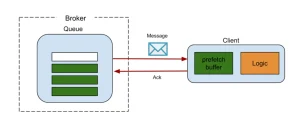Setting clear objectives and metrics are vital to improving ROI at trade shows, as is having a plan in place to implement and track these KPIs.
Attending a trade show requires more than simply paying the booth fee; tracking all costs associated with attending is key to understanding true return on investment (ROI).
1. Focus on Engagement
No matter your level of experience as an exhibitor, trade shows provide an exciting platform to reach new customers and demonstrate your products to potential consumers. However, in order to maximize return on investment and get the most from this investment opportunity, it’s crucial that exhibitors focus on engagement metrics both before and during an event.
As you begin preparing for a show, collect a list of company email addresses to reach out to prior to its start date. Divide this list up between cold leads and those who already know your company; engage them through personalized outreach campaigns by asking if they’ll be attending and scheduling meetings, before quickly following up with personalized emails tailored specifically for their needs.
2. Make a Plan
Planned time at a trade show will help you focus on important tasks while meeting goals and metrics on schedule.
Start by determining your costs associated with attending the event and potential revenue sources – this could include product sales, leads generated or media coverage gained.
Keep vanity metrics, such as booth traffic and number of leads collected, in check as these can create false feelings of success and set unrealistic expectations post-show. Instead, focus on actionable metrics that provide an accurate snapshot of performance for management post-show.
Pre-scheduling meetings with buyers is an effective way to maximize team’s time at tradeshow. Make use of an app that works offline and enables fast note taking during each appointment for accurate follow-up.
3. Build Relationships
Trade show ROI relies heavily on relationships. Fostering these bonds can lead to an increase in sales and an increased return.
Before attending a show, set clear objectives that align with your business goals. This will give an accurate measure against which to gauge results.
Accurately tracking expenses and revenue is also key, from booth design and costs to travel, accommodation and promotional materials. To ensure accurate measurement, select a CRM tool which enables you to tag each lead and track them throughout their sales journey; this enables more precise ROI calculations later on.
4. Make the Most of Your Time
Participating in trade shows requires both time and financial investment. By tracking return on investment, every effort–from booth design to post-show follow up–should bring tangible sales leads or industry connections that contribute value.
Prioritize meetings that are essential to your business, and organize your day at the show floor accordingly. Doing this will prevent you from visiting vendors simply to check them off your list or meeting with those unlikely to convert into sales leads.
Reach out to connectors–people working in your target field who already have an established network of potential customers–and invite them for happy hour or dinner. Connectors will likely be more inclined to do business with someone they already know than with someone new they meet cold. Make it easy for them to do so by creating visual meeting recaps that make business with you seamless.
5. Keep Track of Leads
Once a show ends, new leads can easily vanish into thin air. Make sure all qualified leads you receive are recorded in an accessible database – with an established process for collecting this data immediately and inputting it into your CRM system.
Paper forms are an outdated means of gathering lead information. Not only can they look unprofessional and be inefficient for those filling them out but they’re also inconvenient for marketers later who must manually enter all that data into a spreadsheet.
Data analytics provide businesses with an accurate measure of ROI and help them to learn what needs to be improved upon for future trade shows. Capturing leads instantly, engaging prospects before the show, and analyzing data can dramatically increase trade show returns; then comes follow up to convert leads into customers.







More Stories
Beyond the Ramp: Practical Strategies for Creating Accessible and Inclusive Trade Show Experiences
Beyond the Badge Scan: How AI-Powered Lead Retrieval and Post-Show Analytics Are Changing Events
Accessibility and Inclusive Design: Building Trade Show Exhibits That Truly Welcome Everyone